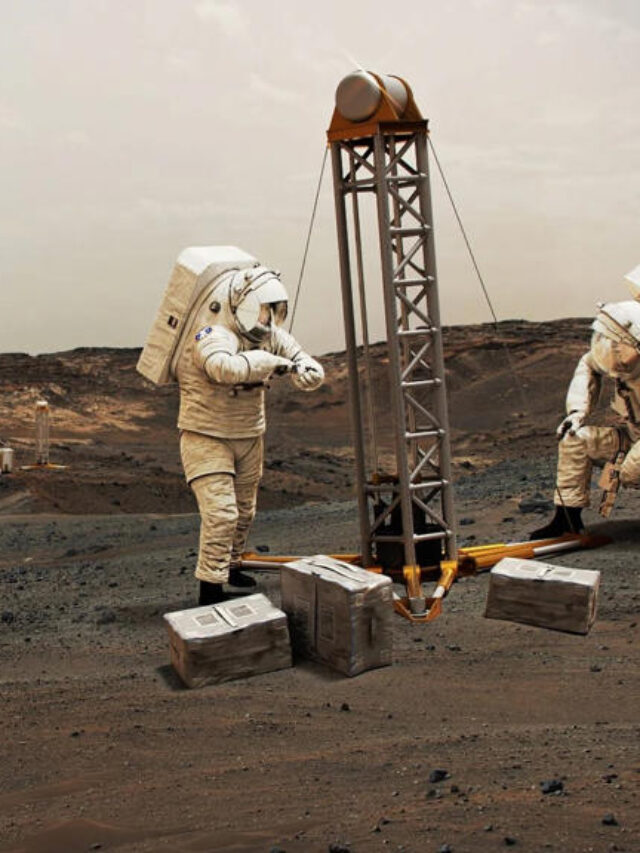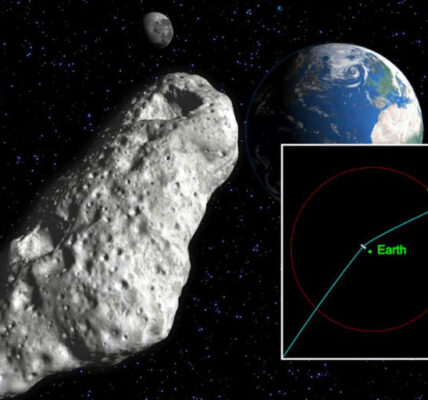“lunar railway”Lunar Railway: A Futuristic Idea Becoming Reality
Dive into the innovative concept of a lunar railway proposed by NASA for sustainable moon exploration. Discover how levitating magnetic robots could revolutionize transportation on the lunar surface.

© Provided by Daily Mail
Lunar Railway: A Visionary Approach to Moon Exploration
The notion of a lunar railway might sound like a scene straight out of science fiction, but it’s actually a groundbreaking concept that NASA is actively pursuing. Imagine a floating train track on the moon, propelled not by traditional locomotives but by levitating magnetic robots. This ambitious project, known as Flexible Levitation on a Track (FLOAT), is poised to transform the way we transport materials across the lunar surface.
FLOAT: The Future of Lunar Transportation
The FLOAT project, funded by NASA’s Innovative Advanced Concepts program, aims to develop a reliable and autonomous transportation system for future moon bases. Instead of conventional fixed rails, FLOAT proposes flexible tracks that can be easily deployed and repositioned as needed. This adaptability is crucial for accommodating changes in the lunar base layout and optimizing resource utilization.
Unraveling the Mechanism: How FLOAT Works
Picture a Scalextric-like track, but instead of cars zooming around, it’s levitating magnetic robots gliding effortlessly across the lunar surface. These robots, devoid of traditional propulsion systems, rely on electromagnetic thrust generated by the tracks themselves. It’s akin to maglev trains on Earth, where the tracks provide the power to propel the vehicles forward.
The Advantages of FLOAT: Efficiency and Adaptability
One of the key advantages of FLOAT is its ability to operate autonomously in the harsh lunar environment. Unlike conventional wheeled or legged robots, the levitating carts of FLOAT minimize wear and tear on the tracks, ensuring long-term reliability. Moreover, the flexible nature of the tracks allows for easy relocation, facilitating efficient resource transportation within the lunar base.
From Concept to Reality: The Journey of FLOAT
FLOAT is not just a pie-in-the-sky idea; it’s a tangible project backed by substantial funding and scientific expertise. With each phase of development, the FLOAT team is inching closer to realizing the vision of a lunar railway. Through rigorous testing and iteration, they aim to refine the technology and demonstrate its feasibility for future NASA missions.

© Provided by Daily Mail
Unlocking the Potential: Applications of FLOAT
The applications of FLOAT extend far beyond simply shuttling materials across the lunar surface. This innovative transportation system could play a vital role in supporting various aspects of lunar exploration and habitation. From transporting mined regolith to ferrying supplies between landing sites and outposts, FLOAT promises to be a cornerstone of sustainable moon exploration.
Looking Ahead: The Future of Lunar Exploration
As NASA continues its Artemis missions, with the goal of establishing a sustained human presence on the moon, projects like FLOAT are poised to play a pivotal role. By leveraging cutting-edge technology and innovative thinking, we are on the brink of unlocking the mysteries of our celestial neighbor. The lunar railway envisioned by FLOAT may soon become a reality, paving the way for a new era of space exploration.
Conclusion: Bridging Science Fiction and Reality
In the realm of space exploration, the line between science fiction and reality continues to blur. What once seemed like distant dreams are now within our grasp, thanks to visionary projects like FLOAT. As we set our sights on the moon and beyond, let us embrace the spirit of innovation and exploration that drives us ever closer to the stars. The future of lunar exploration is bright, and the lunar railway envisioned by FLOAT is just the beginning of our cosmic journey.
ALSO READ:
“Space Debris Risk: 5 Terrifying Near Misses That Will Make You Rethink Space Travel!”




